Thank you all for posting your pictures of Dioramica 2016.
Almost all of these were bird's-eye views of the diorama's and documentary shots of the participators and their faces.
Time to go a little closer to what participators made and what they did:
These are the newest Lituanian horsemen by Franznap:
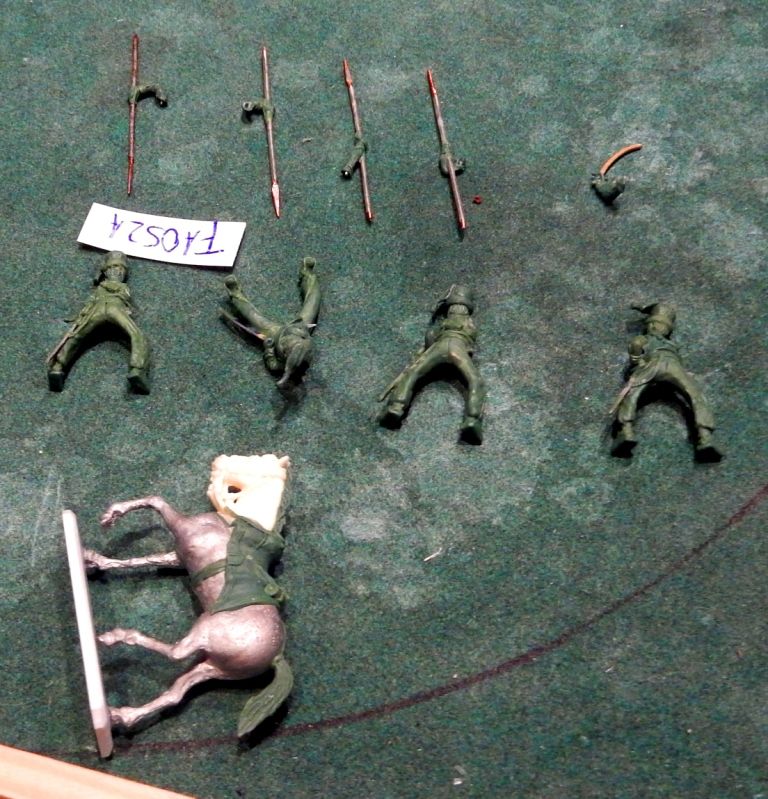
Herr Schilling invited Franznap to have a look at how his models are getting molded:
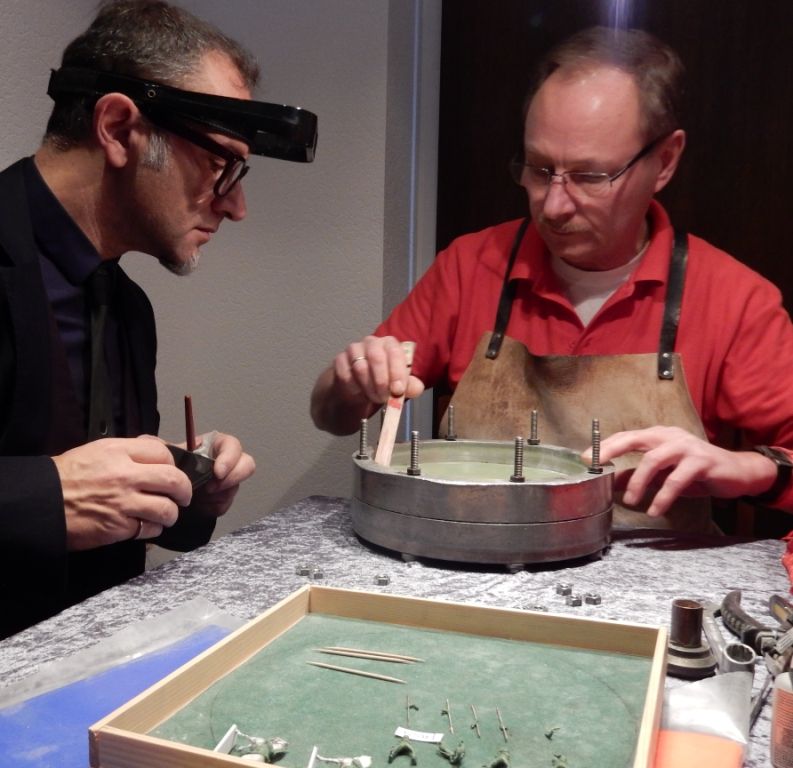
Franznap works together with Schilling because of Schillings high quality, he told me. But I think today Franznap regretted this coöperation. The confusion was complete because Schilling tried to speak English and Franznap tried to speak German that sounded like Dutch.
Franznap: "When you casted my French Pontoniers last spring you broke three of my models."
Schilling: "That's correct."
Franznap: "Was that necessary?"
Schilling: "It happened because you did not wash your hands."
Franznap: "What?"
Schilling: "If you don't wash your hands before sculpting, your models brake when I make the mold."
Franznap: "You must be kidding!"
Schilling: "No. When I receive your models by post, I can see if you washed your hands or if you didn't. In case you did not, grease and dirt sticks between the different layers of the sculpting putty. There your model breaks when I push it into the silicone. You finally understand it now?"
Franznap: "Maybe you pressed too hard?"
Schilling: "I pressed too hard? I pressed too hard?

Well, I think today you better do it yourself then!"
So Franznap is switching positions with Schilling who asks him to press the silicon slice on top of the models. Franznap is carefull, fearing the fierce torment of Herr Schilling, and is pressing very very gentle.

Then both gentlemen hear a little sound: "KNACK"
Franznap looks shocked at Schilling.
Franznap: "Did I break it?"
Schilling looks at him. He starts laughing and dancing (he really did).
Schilling: "Yes! Yes you did! You broke it yourself! You broke it yourself! Its because you did not wash your hands! I am so happy today! Yes! Yes!"
Franznap gets silent. He watches both of his own hands. And leaves for the toilet to wash them.
This is what the pre-mold looked like before the topslice was added:
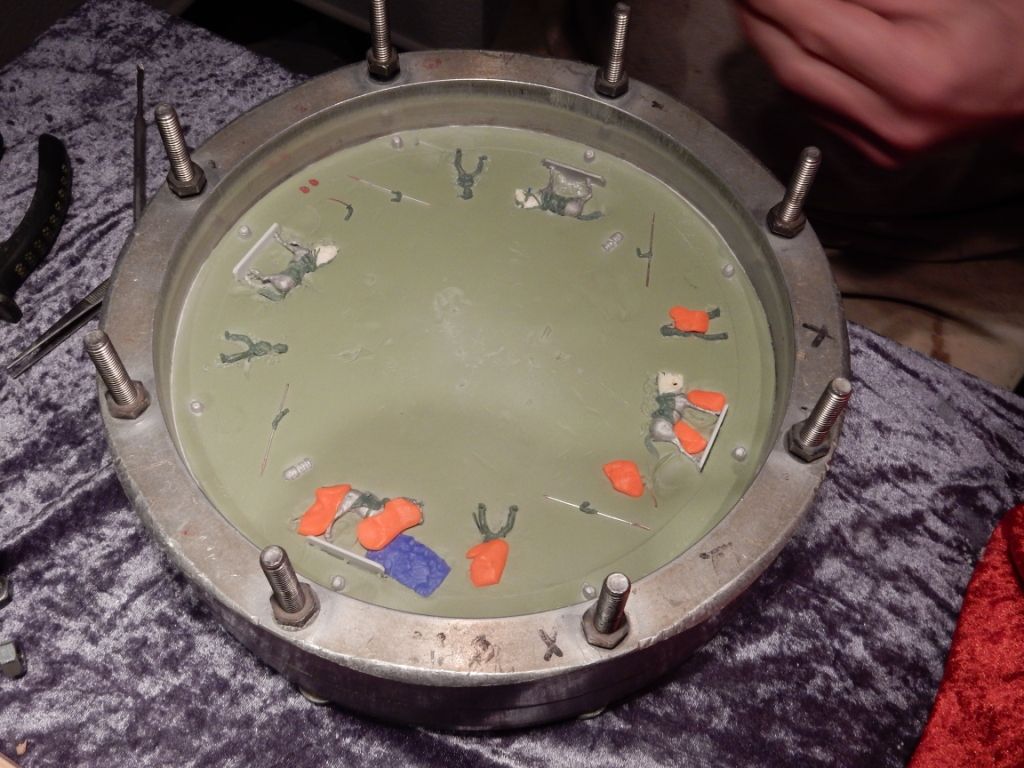
Green silicone is hardest, blue is softer and orange is the softest. These little colored pieces of silicone were added to adjust undercuttings and difficult shapes in the models and mold. The process is called vulcanisation. The silicon swells after heating so creates high pressure by which the molding material is pressed tight around the models. At least, this is what I understood of it.
Meanwhile Herr Schmäling from Art Miniaturen joins the session and watches Schilling with great interest:
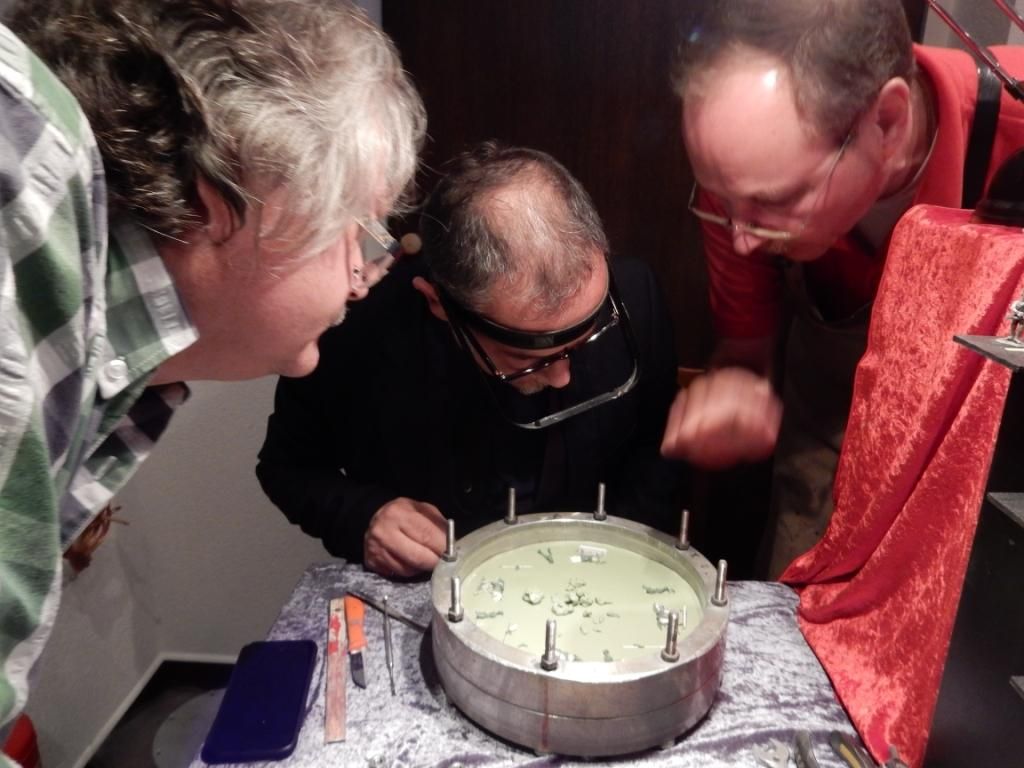
Schmäling: "Oh, that looks good Herr Schilling. I will try that at home. I have still some of those silicone slices in stock."
Schilling: "For how long?"
Schmäling: "Well... seven... or eight maybe?"
Schilling: "Weeks?"
Schmäling: "Months."
Schilling: "Eight months! You fool! Out of my sight! Eight months! The shelf life is only two months. After that you must throw it away! If you use it after those two months your castings will look terrible!"
Schmäling: "Wolfgang and Patrick just ordered 28.000 of my Austrians, Bavarians and French for their new Lobau Island diorama. These guys think great. They think of masses, not of individuals. And since they will have all of my figures painted by Sri Lankese ladies, they never have to have a real close look at my home casted figures themselves. So you should not worry to much about the shelf life of my silicone, Herr Schilling."
Schilling: "Please shut up and go away."
I was happy to see after this session Schilling, Schmäling and Franznap are still good friends. Schilling has a remarkable karakter. And he is a great professional indeed.
Here are some future Skytians from Frankzett, they will be produced by Hagen Miniatures:
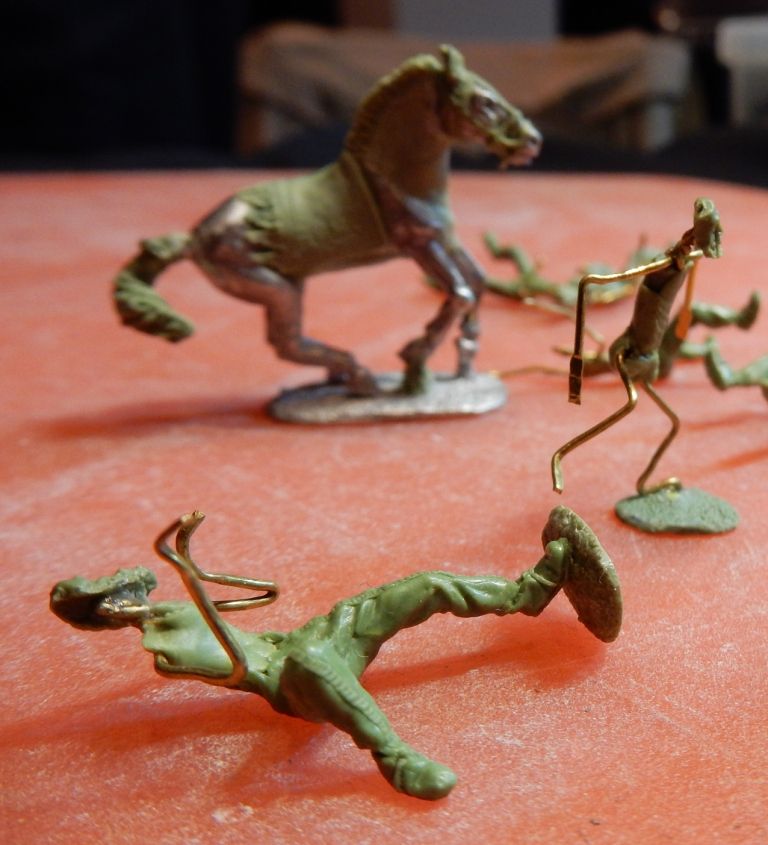
The man laying down is about to mount his horse.
Some remarkable details: Frank makes all faces separate before attaching them to his copperwire frames. He sculpts these faces on the side of a wooden toothpic (I'm sorry I forgot to take a pic of that) which have exactly the same width as a 1:72 scale human face. After hardening, he removes the face from the toothpic and ads it to his figure. He always has a lot of wire-frames ready. When he has putty mix leftovers that are getting stiff at the end of a sculpting session, he ads these to the wire frames as basic body mass. To safe material and so to safe money. Frank is a professional archeologist. That explains why his critics to ancient subjects often make so much sense. He brought a treasure of layouts, designs and copies of texts and illustrations with him, all about ancient subjects like galley's and dress. It made me wild.
This is the extraordinary work for a Rocroi diorama by Denis Huré who lives in Rocroi himself as I understood.
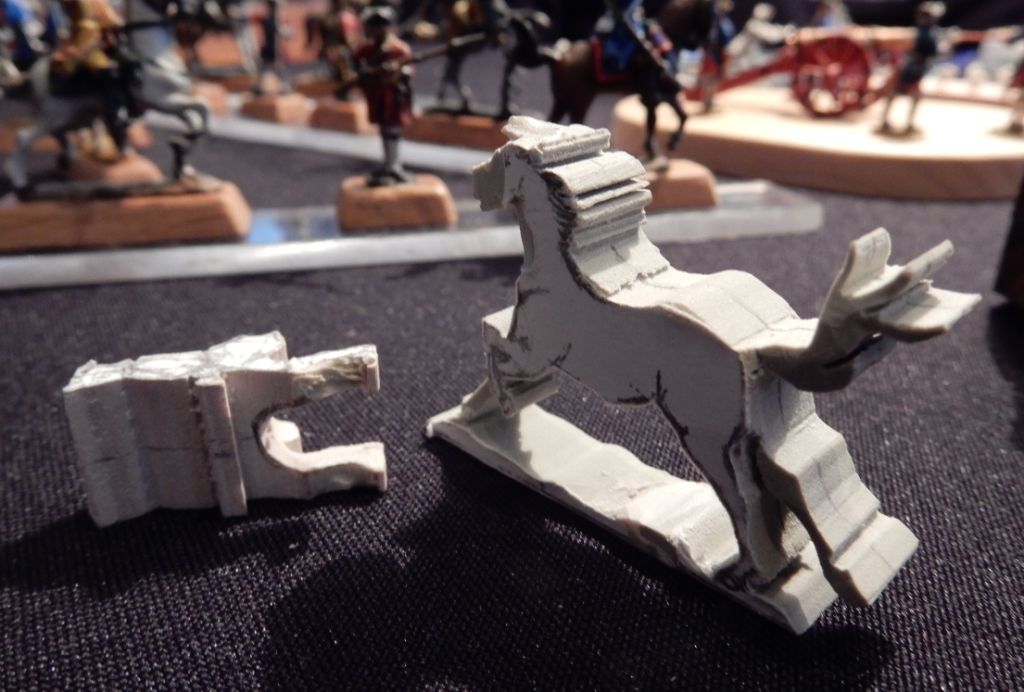
The thing at the left looking like Spongebob is the raw shape of a horseman.
Denis is not sculpting them, he is sawing, sanding and cutting his resin figures, so his method is completely different from all other sculptors. Only as a final touch he is adding some putty for buttons and other small details. Miniature weapons and tools come separate of course, just like the heads for making lots of variations.
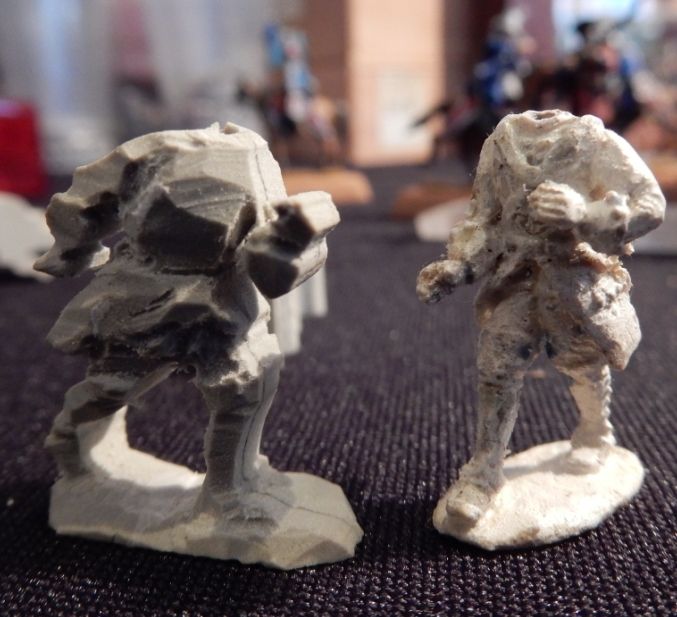
This is Alfred Umhey, doing something I have never seen before:
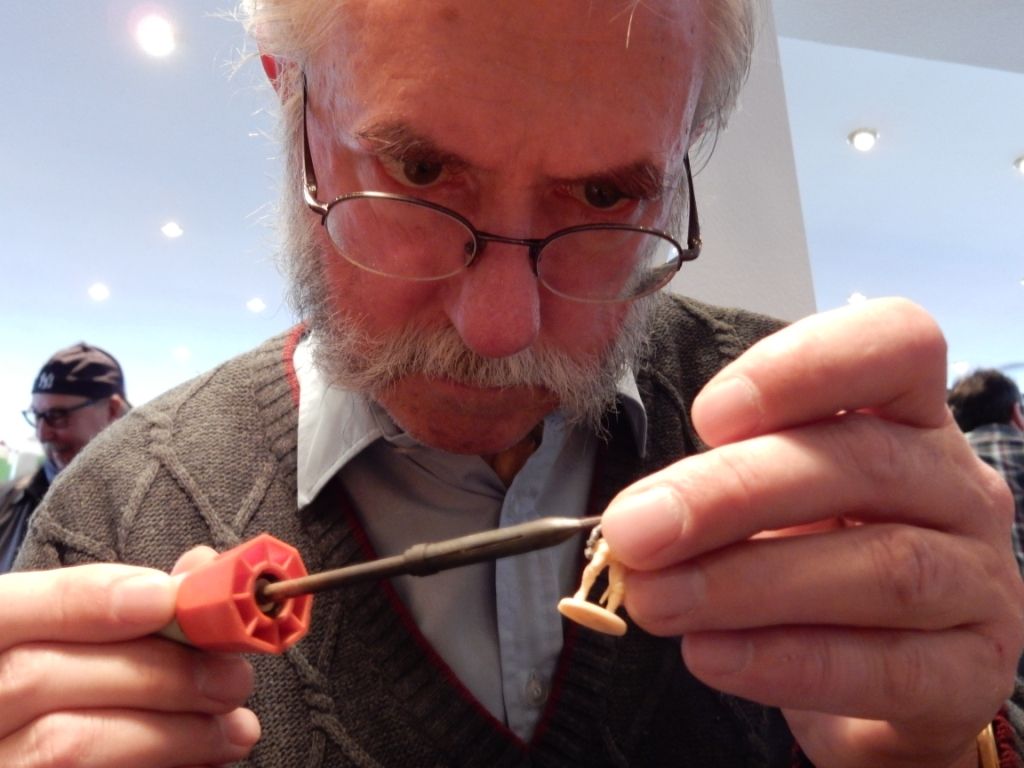
He converts plastic figures with a soldering iron:
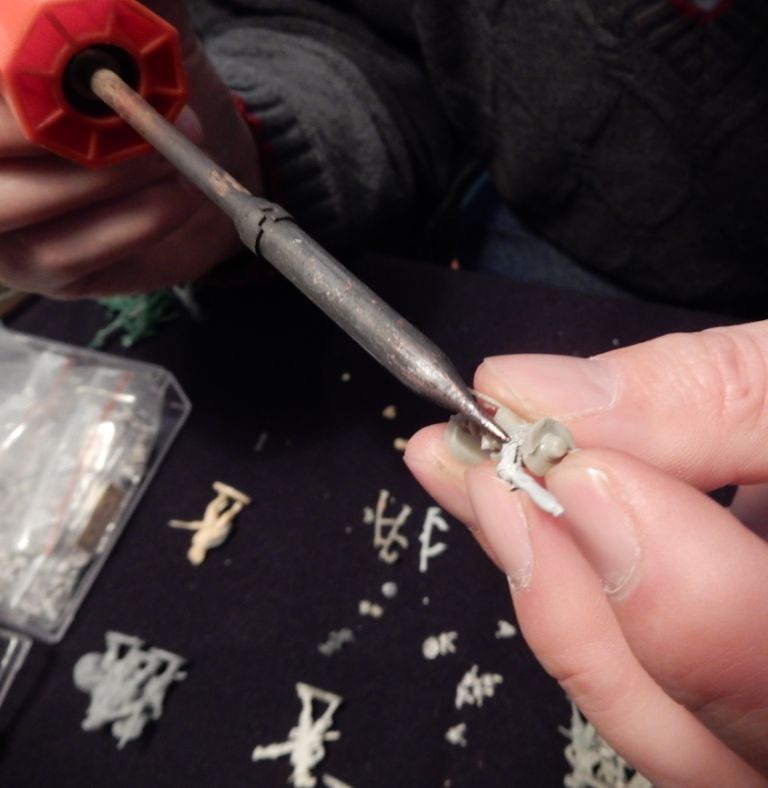
The first result is pretty rough but it can be polished before painting and melting the plastic is stronger than glueing it. And his purpose is for the great masses of figures, not the individual models. I was surprised to hear he is the man behind all the great, massive group-build diorama's that were exposed every year at the DUZI in Wesel. Here at Dioramica he participated in the Hastings diorama.
Also he made this diorama together with his brother Roland:
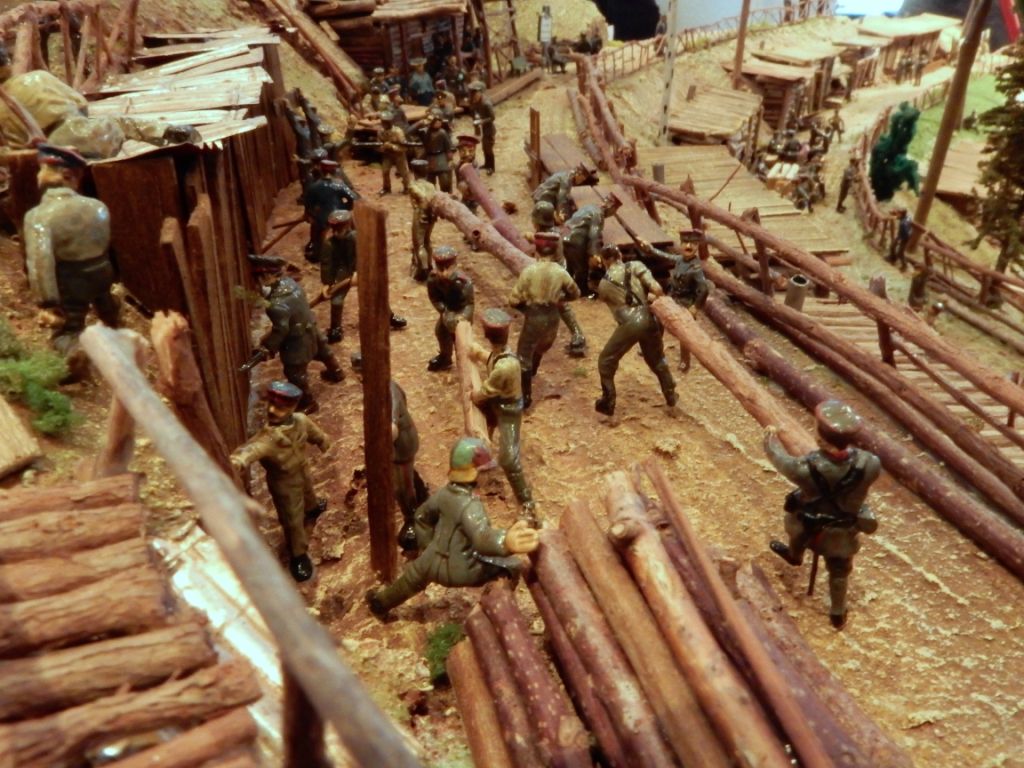
Lots of daily life scenes behind the WWI front line going on just in one big diorama. Almost every figure is a conversion. The glossy varnish of the figures gave it an antiquarian look. A bit like the whole diorama had been made during the interbellum. A real curiosity.
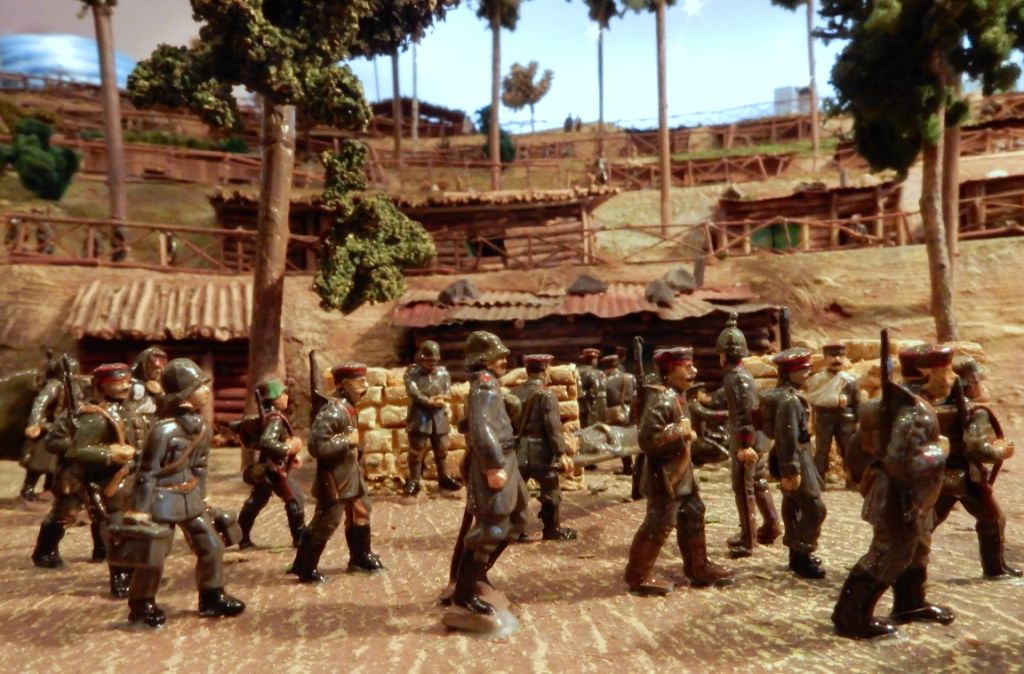
This man you all know already. He is half human, half god. Where ever he goes, there are sparkling stars above his head:
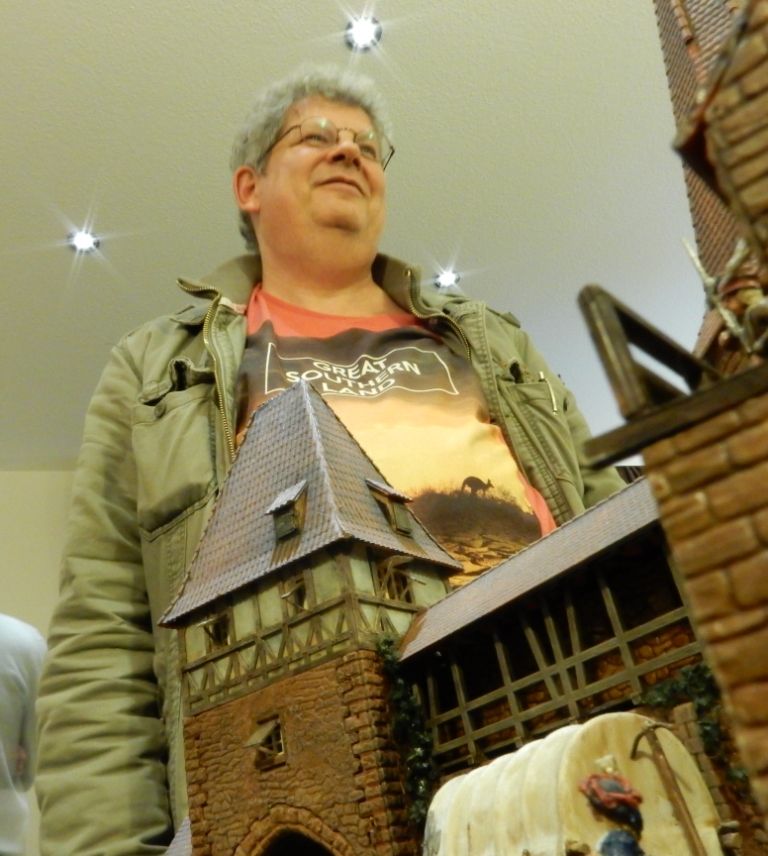
He has many followers. Among the most talented dioramabuilders present at Dioramica, several of them made almost exact copies of this man's work, using this man's figures and his techniques.
People told me he is very good in doing modeling water. I think these people are right:

They told me he is good at killing animals. I think that's right too:

...just like he is good at breaking pots...
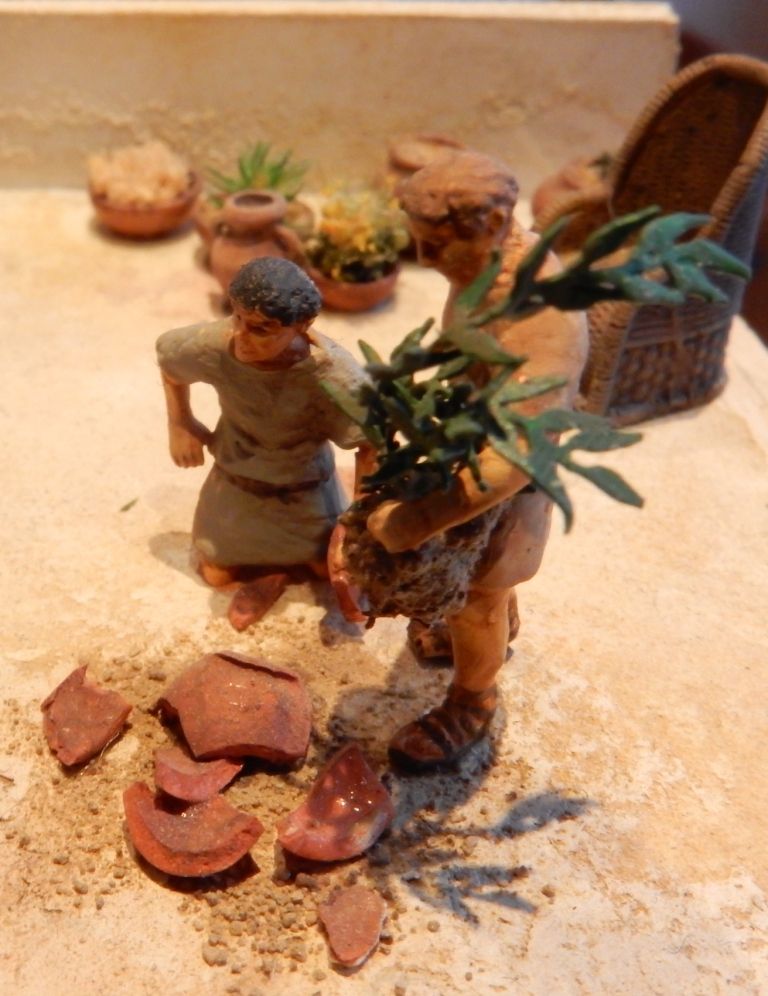
...and destroying mother nature:
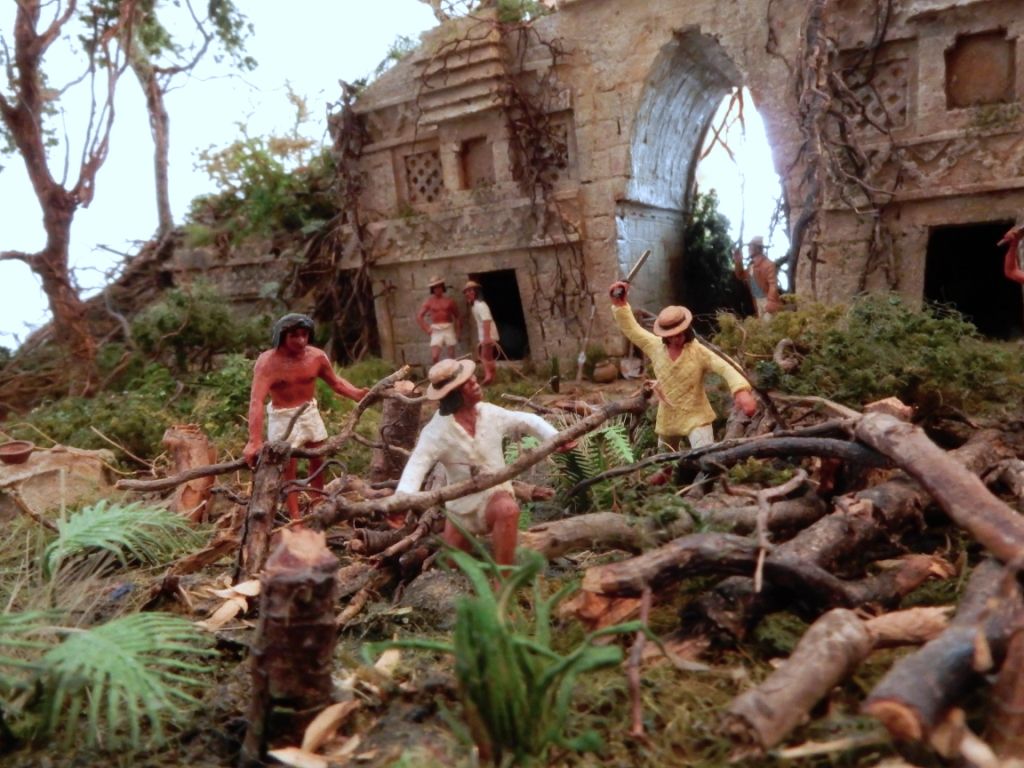
But he is also a talented musician and painter:
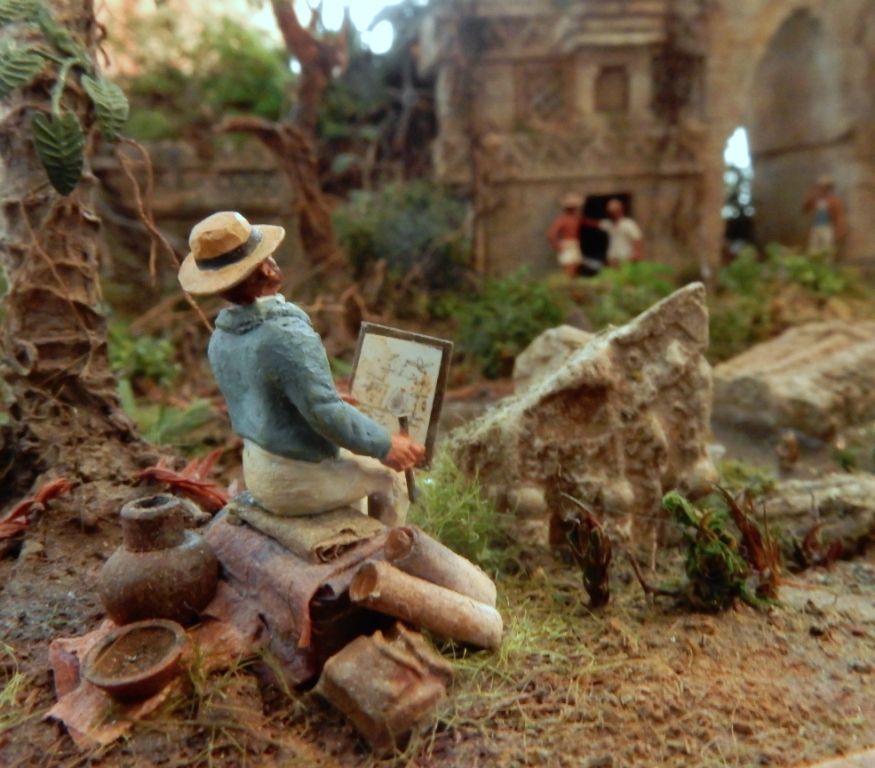
At Benno's Forum he calls himself Entrauner and he invited me to sit next to him at breakfast.
Entrauner: "Do you know how I became a professional modeler? As a nine years old boy I made my first diorama and showed it proudly to my father who was a professional wood model ship builder. My father looked at my diorama in disdain and said: 'Thats nothing! Its no good, son. I am realy disappointed in you.' For me that was a hard lesson. But also the best lesson a father could give his son. So I started all over again, destroyed my first diorama and build a second one that was much better already."
Mr. Cryns: "I see, Herr Trauner, I see, a nice story. Now let me tell you about my own father. He was an art&crafts teacher. When I was seven years old he helped me building my first diorama at home. When it was finished he was very satisfied with the result. But I was not. I destroyed all of my fathers work and replaced it with mine. Only then I was satisfied."
Everybody listening to our conversation was laughing very loud.
Entrauner: "You are susch a funny guy, Mr. Cryns."
But I am afraid he did not realise I was deadly serious.
However, it was my greatest pleasure to meet him.
At every modelling event there are people walking around with secret little boxes in their pockets. What's in those boxes is carefully hidden for the crowds and only exposed to the eyes of picked persons:

I remember ten years ago a teenage boy called Benno came to me at the Duzi and showed me some of his Napoleonic figures that were hidden in a small wooden box. He liked to hear my opinion. I thought (and said) it was excellent brushwork.
At Dioramica there were at least three people walking around with such secret boxes in their pockets. The first one I met was Thomas Willers who had the most fantastic renaissance figures sculpted by Alex and painted by himself with him.
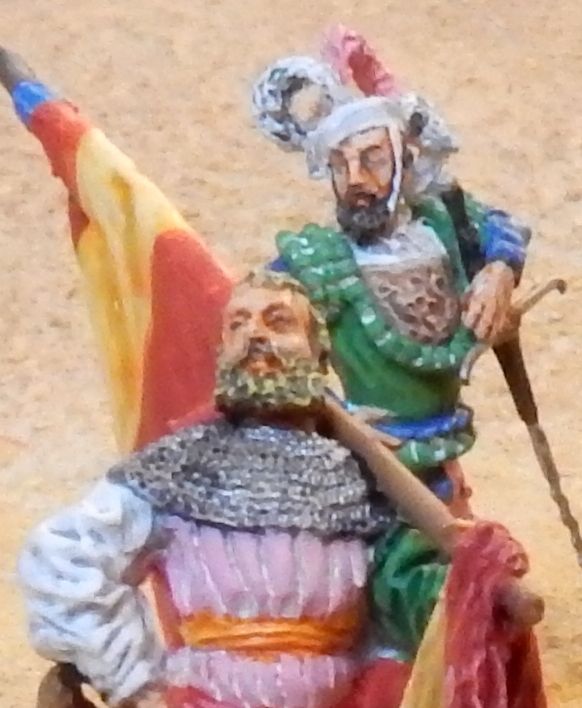
I was delighted to see his paintingwork and honored to place them on my gaming table. Look at their faces. Isn't it great? It was the first time I had Alex' figures in my own hands and on one of my tables.


A silent man with very strong hands witnessed this. He had something hidden in his pocket too. It was a Highland cow. It turned out to be Stenfalk whose work I proudly placed on my other, much more fertile looking gaming table:
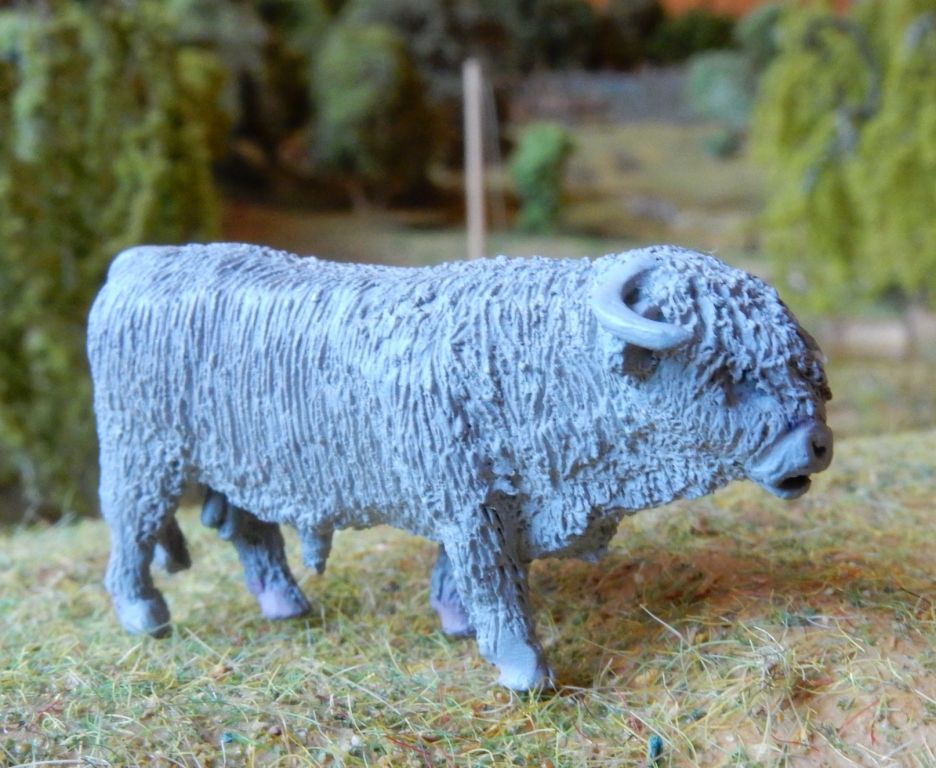
Stenfalk, I look forward to see this Highlander painted by your own hands.
The third man with a secret box in his pocket was myself but that story is for another topic in this forum.
One of the most remarkable details I discovered was part of Rüdiger Fischers gold winning vignette 'Bootsfahrt zu Rheinsberg' :
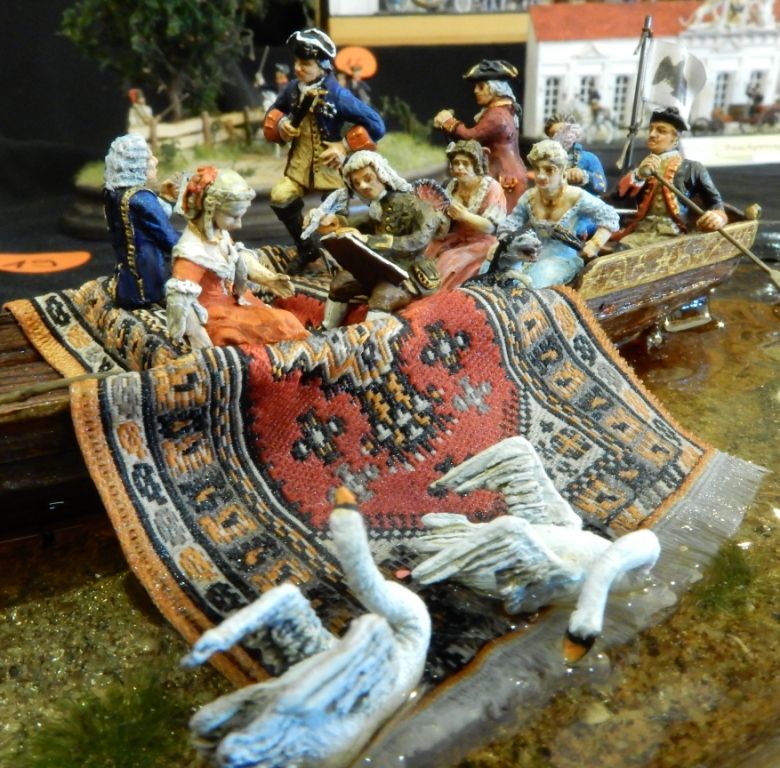
Look at the carpet. Its real!

Its microscopic woven fabric. Kostis, if you read this, I am sure this will interest you. Its another way of making embroidery patterns but Herr Fischer told me he bought it and did not make it himself.
But apart from this I think Fischer is a remarkable modeler who displayed lots of fantastic work.
Look at the ceiling of this palace hall: in this (old) picture in Wolfgangs post the plafond had this 1970's laminated wood look:

Fischer must be one of those people who is never completely satisfied, never says a diorama is finished and always prepared to improve it and listen to critics of other people. Thats what I like so much about him and his work. Look what happened to the ceiling before he took it to Dioramica:
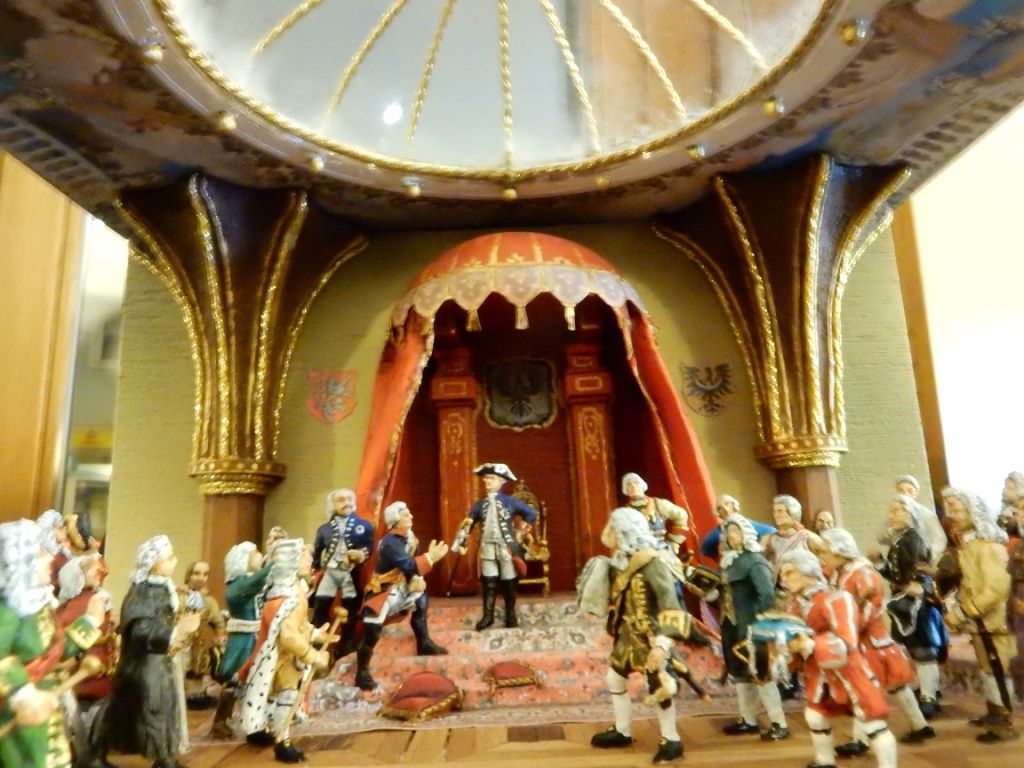
Some real baroque art added!
Wolfgang Hartungs medieval siege has been photographed and posted a lot already. And that has a reason:
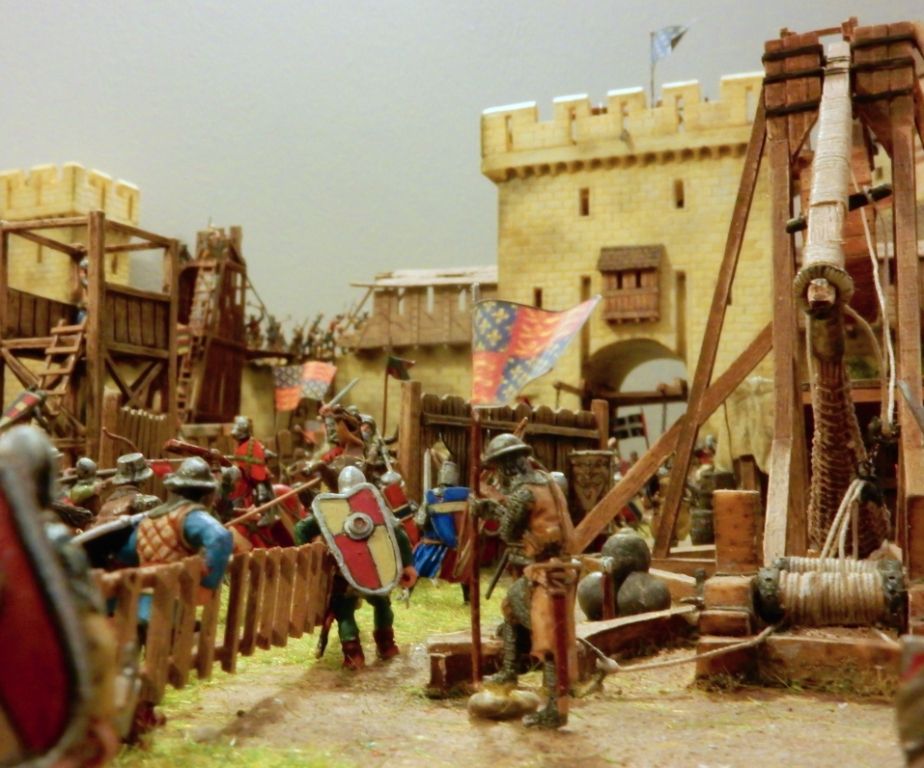
A big diorama with lots of perfectionism up to the smallest details. The siege tower, the wooden constructions covering the castle wall and many of the siege engines were build by himself, using cardboard. I think the result is excellent. The design of the siege tower was inspired by the much larger Elastolin model, he told me.

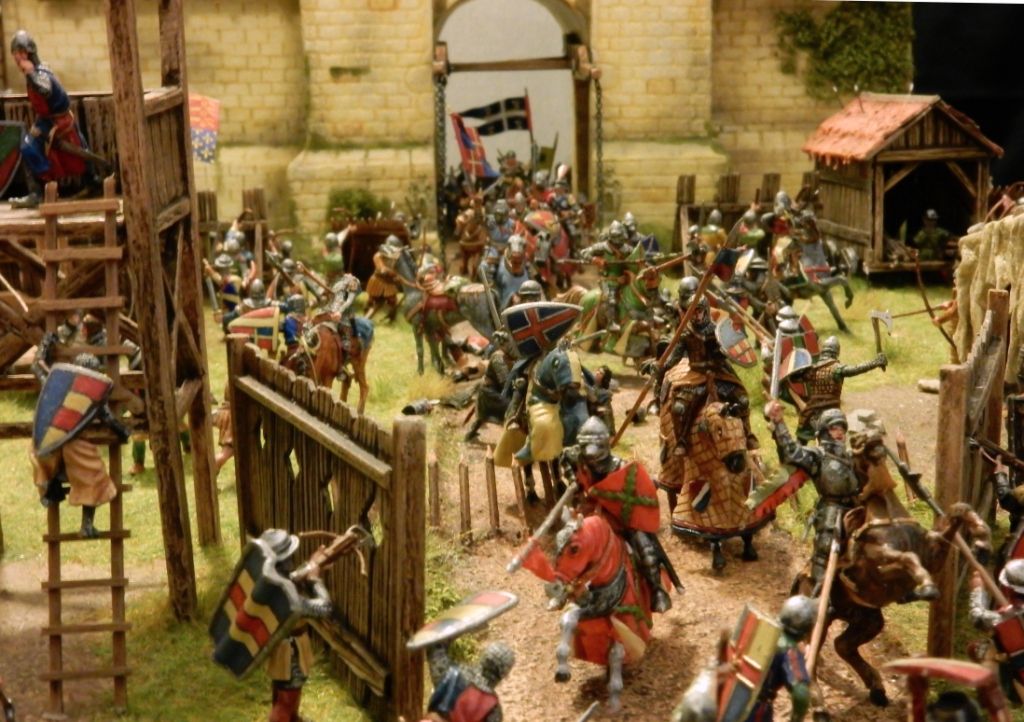
Remarkable was the fact that another of his diorama's, a town with Napoleonic figures, was in the high background and added to the greatness of this medieval subject:
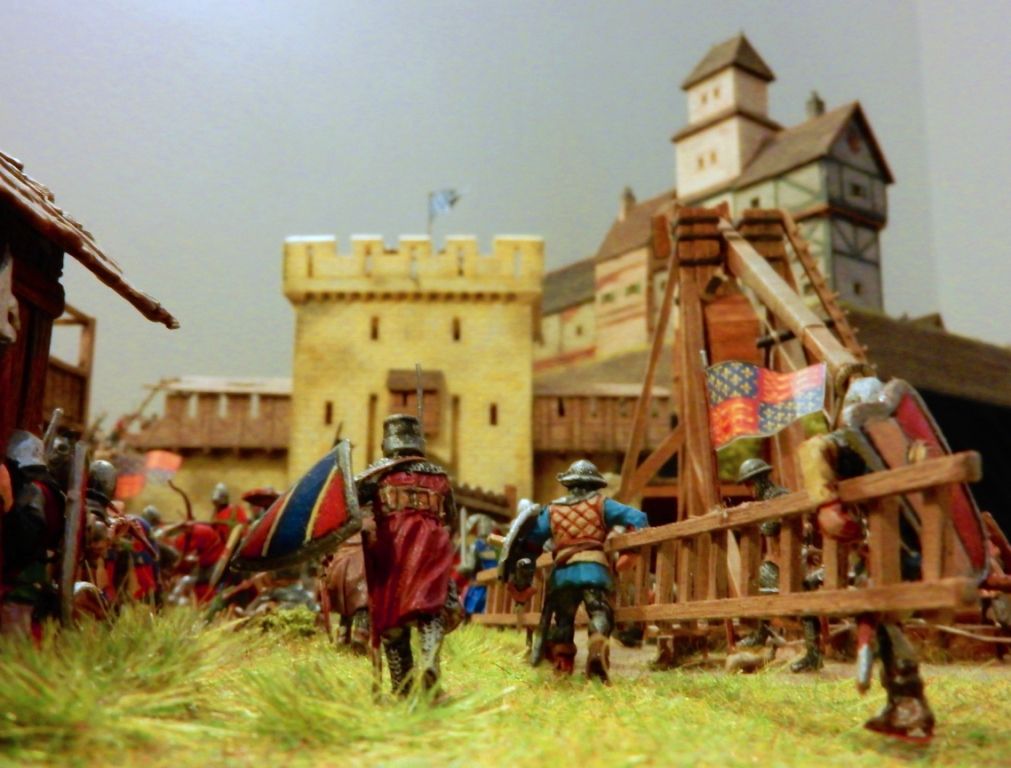
Enough for today. I may continue this report later on, because there was more interesting things that I would like to share with you.



 .. the most interesting since a long time .. many thanks to wolfgang and his crew for this fascinating event...
.. the most interesting since a long time .. many thanks to wolfgang and his crew for this fascinating event... 






 but i think all of the shown dio's were great ..
but i think all of the shown dio's were great .. 





 Moderator
Moderator



 Supporting Business
Supporting Business




































